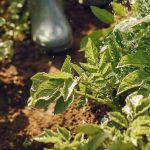Biosensors uses in Agriculture has been the key development of human civilization which involves production of crops and raising livestock to attain people’s sustainable goals for food. Pathogens have been recognized as one of the major factors causing a reduction in the profitable food production. Hence there is a need for putting an end to the effect of pathogens. The conventional method of detecting pathogens is time consuming and expensive for farmers. The most common methods for detecting the pathogens in agricultural and food sectors are Polymerase chain reaction ,Culture and colony counting ,Immunology based method, Hand-held immunochromatographic assays (HHIA). In spite of the real need for obtaining analytical results in the shortest time duration, these traditional methods for detecting the bacterial infection may take upto 7 to 8 days. This has geared up the researchers efforts for the advent of new technology named as biosensors.

A biosensor is an analytical device which converts biological reaction into an electric signal. The device comprises a transducer and biologically active elements or materials enzymes, nucleic acid and an antibody that allows the detection of an analyte by specific interactions. The application of the biosensors mostly includes examining the ecological pollution control in both the agriculture and food sector. The main attributes of the biosensors are sensitivity, cost, reproducibility and stability. Biosensor increases the product safety and decreases the cost and assay-time.
Components of a Biosensor:
The biosensor consist of the following components in it
● Analyte
● Bioreceptor
● Transducer
● Electronics
● Display
Characteristics of Biosensors:
Certain static and dynamic attributes are present for every biosensor process. The optimizations of these properties are reflected on the performance of the biosensors. They are namely:
● Selectivity
● Reproducibility
● Stability
● Sensitivity
● Linearity
Agriculture biosensors types:
Due to greater public awareness on environmental issues and strict legislative regulations the need for measuring the accuracy of soil, water and air is increasing. Biosensors capable of quickly detecting an organism are important in the environmental monitoring pathogens.
The biosensor types are classified based on the sensor devices and the biological materials. Some of the types are as follows:
● Electrochemical biosensor – It is a simple device which measures the measurement of electric current, ionic or by conductance changes conceded by bio electrodes.
● Whole cell biosensor – In this type, whole cell or organelles are used as a biological component. These cells are cheap and have a longer lifetime and less sensitive to inhibition, pH
and temperature variations.
● Amperometric biosensors – These are self-contained integrated devices based on the measurement of current resulting from the oxidation or reduction of electro active biological
elements.
● Potentiometric biosensors – This form of biosensors provides a logarithmic reply by means of a high energetic range
● Optical biosensor – This type detects how much light is produced or absorbed through the biochemical reaction.
Nanotechnology
Regardless of the field, miniaturization has always proved to be beneficial for varied reasons. For illustration, reducing the size of the biosensor to the micro-or-nano scale can result in a better signal to noise ratio as well as the possibility of using small sample volumes. The use of nano biosensors has been regarded as the more advantageous approach for detecting pathogens in agriculture and food industry. Their rapid and high sensitivity further extends their application in agriculture for disease assessment. The use of nano sensors has allowed plant disease forecasting and disease management in agriculture to an admissible level.
Conclusion
Biosensor technology is the powerful alternative to conventional analytical technique, harnessing the specificity and sensitivity of biological systems in small and low cost devices. The application of nano technology for the advancement of biosensor leads to an efficient Nano biosensor which can be efficiently used for sensing a wide variety of fertilizers, pesticides, herbicides, pathogens, moisture and soil pH. Taken together proper and controlled use of biosensor can support sustainable agriculture for enhancing crop productivity.







